Hi There!
In this third and final blog from Cactus Country I will let the photos do the talking, not that I talk or write much anyway.
An oldie but a goodie “A picture tells a thousand words”







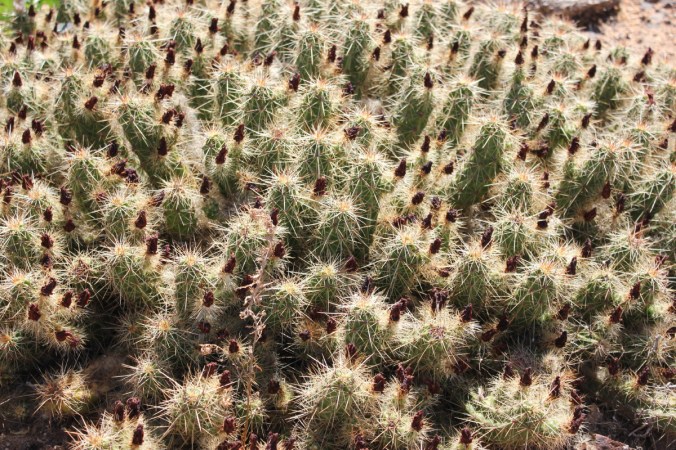

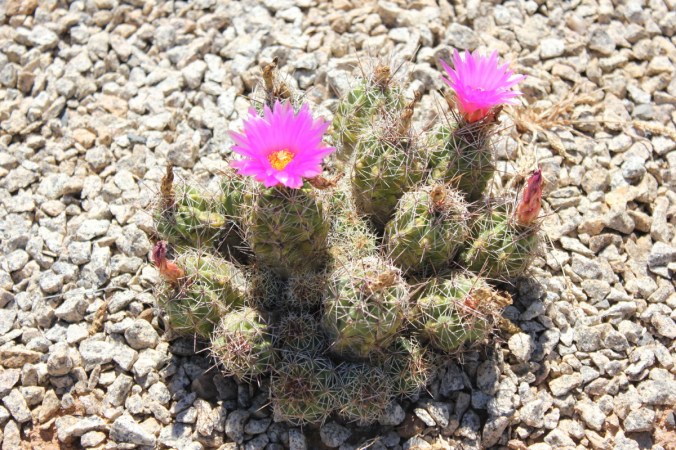





















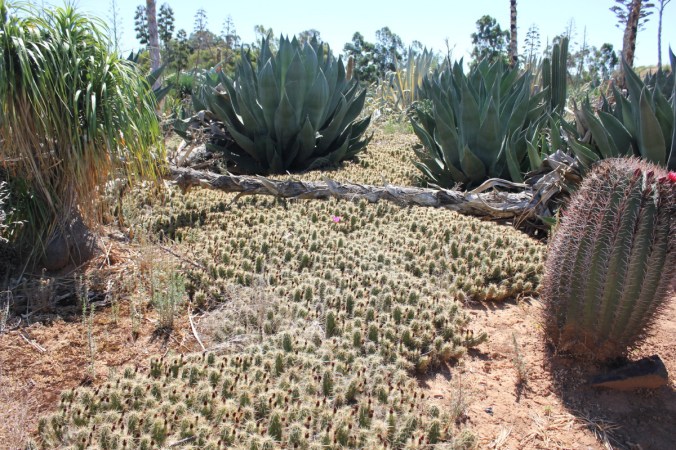



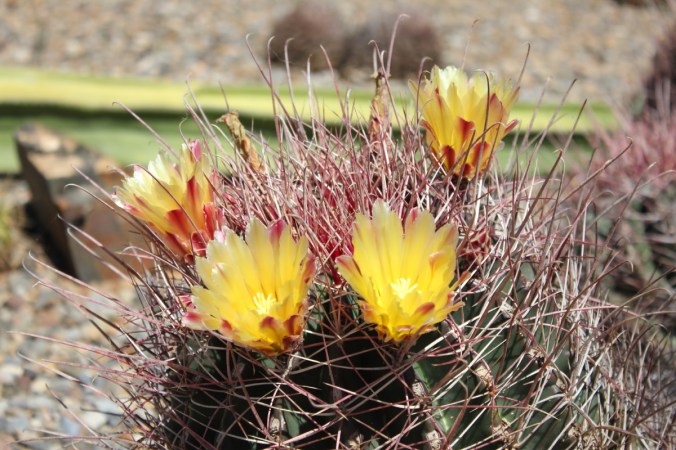














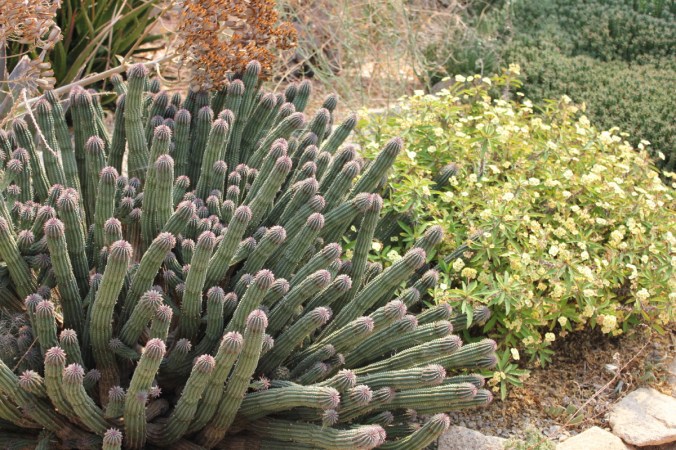

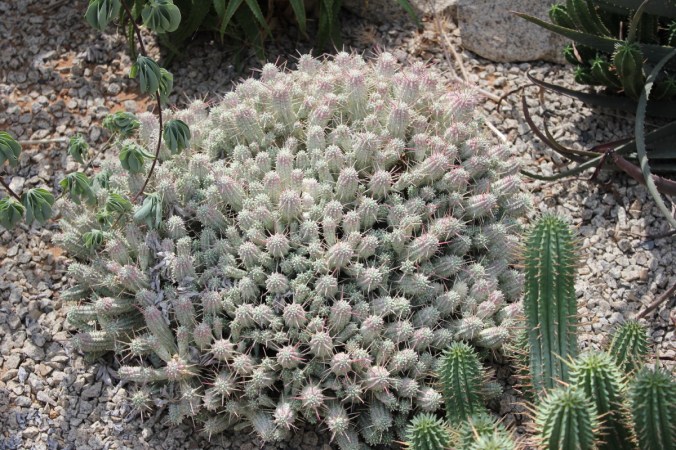
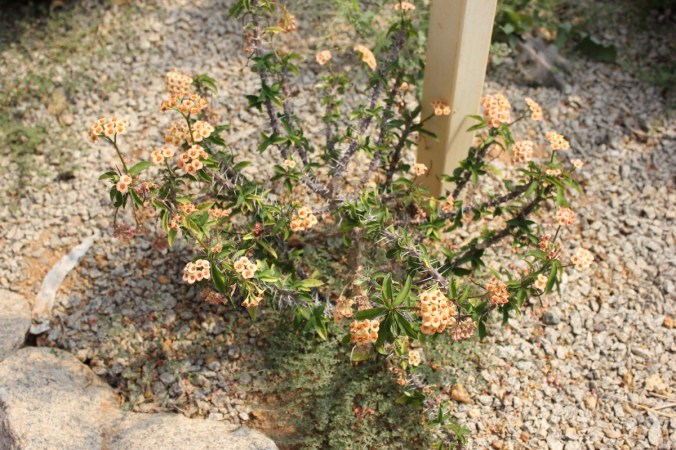

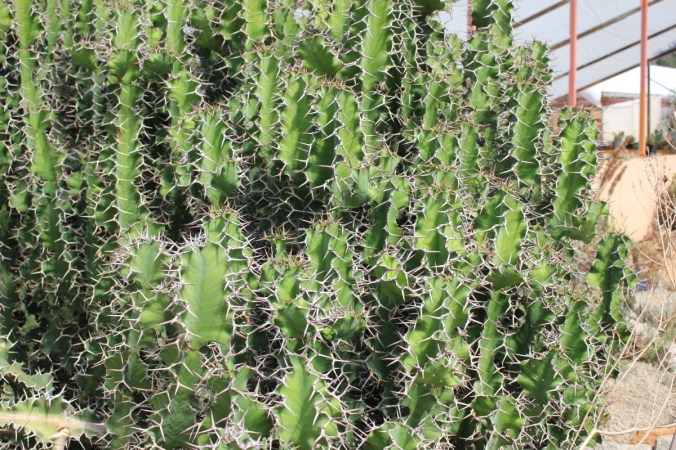

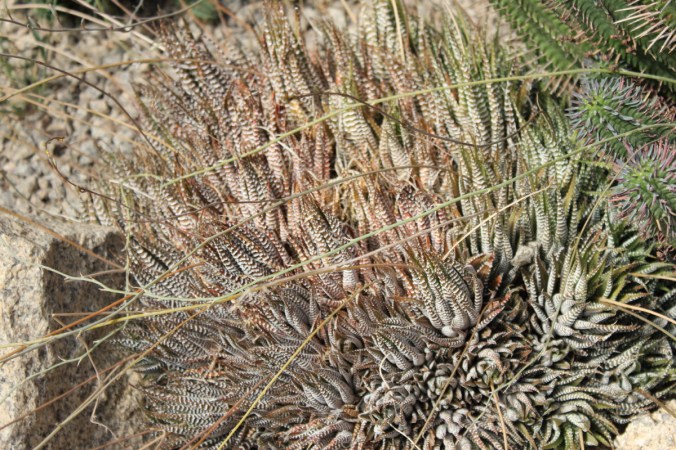

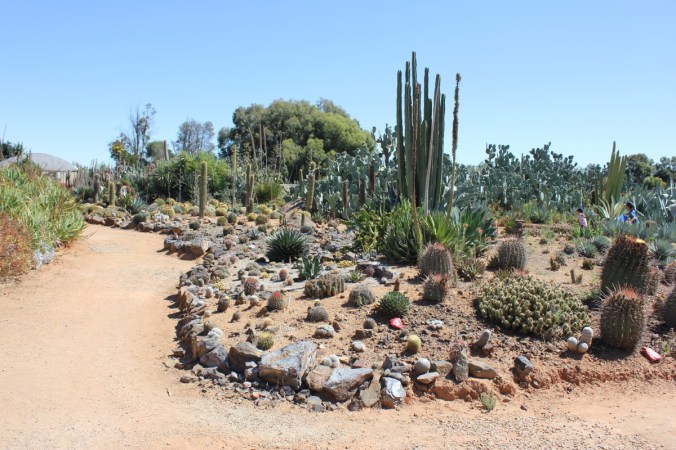


In this third and final blog from Cactus Country I will let the photos do the talking, not that I talk or write much anyway.
An oldie but a goodie “A picture tells a thousand words”






























































Lets continue our journey around Cactus Country. All I can remember saying was wow! Look at this one, look at that! It was pretty awe-inspiring to see so many different types of cacti. They had a pretty informative guide-book and a find it sheet for kids, but I do have a couple of gripes.
1.There were no identification name tag/plates thingies or whatever you want to call them. So how does a cacti novice like me know what I’m looking at or want to purchase for myself later down the track??? I know it might cost a lot of money and take time to do and maintain but plant names are highly important in my mind.
2. Then when we get to the nursery area its nigh on empty!! What the!! I could have counted on my fingers and toes the amount of different species in the nursery. Consider this, Cactus country has 10 acres of display gardens and their website states ” Australia’s largest Cactus garden with an extensive plant sales area”.
Maybe I was just there at the wrong time, maybe someone had bought all their stock the day before, maybe I just missed out. Maybe I was just feeling deflated that I couldn’t dive straight into a cacti collecting frenzy.
Enough of the self-pity, one thing is for sure. I will be going back to Cactus Country, it really was quite fantastic!
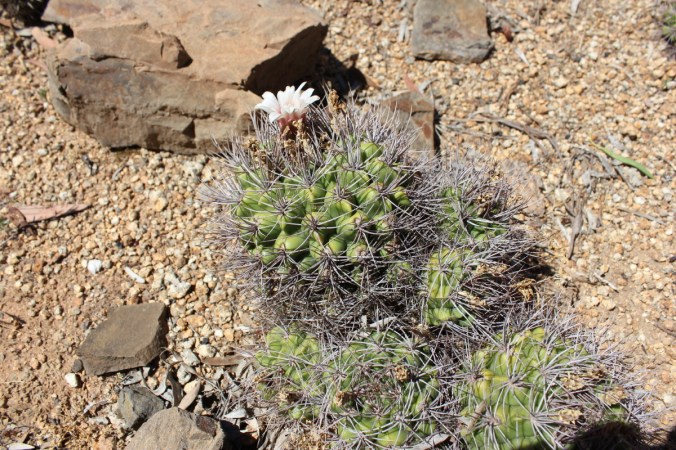



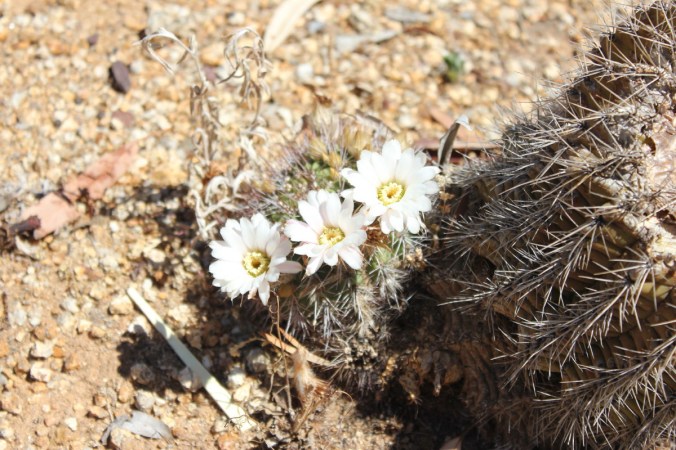




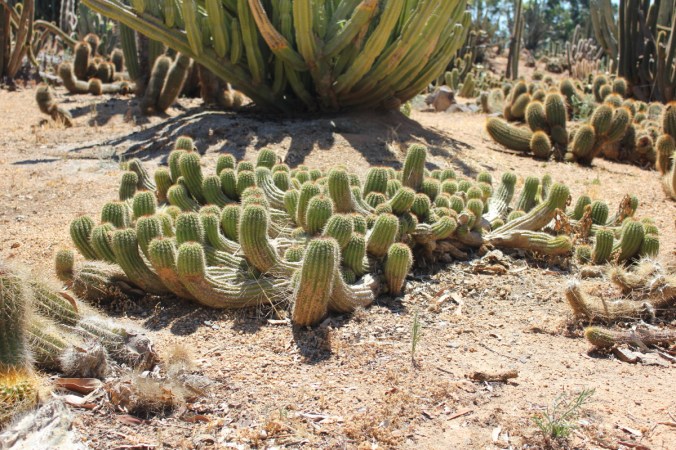




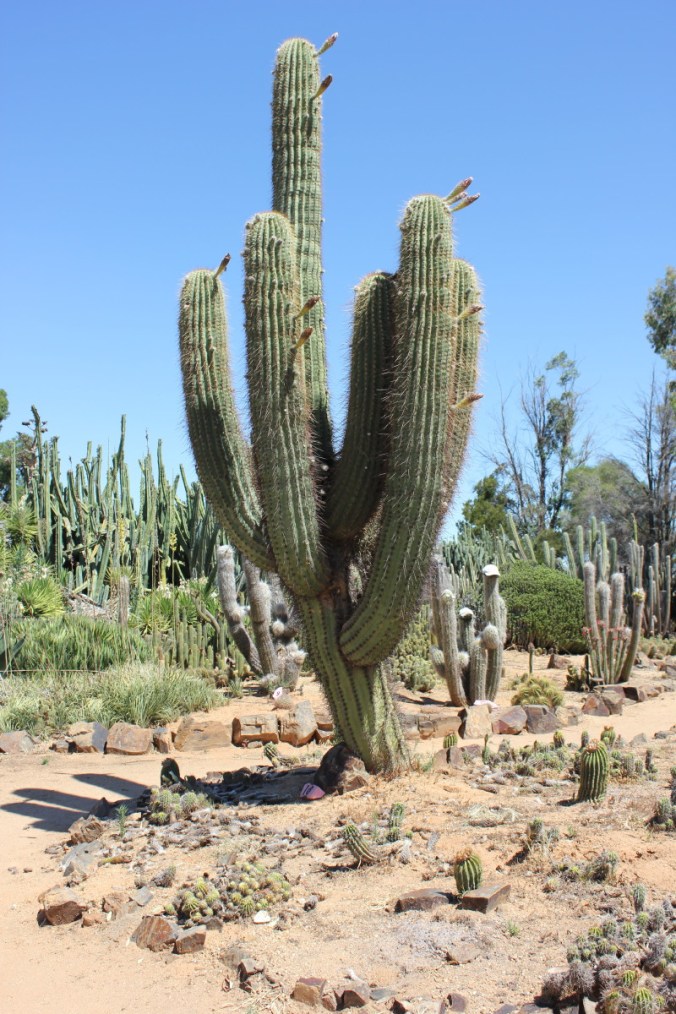



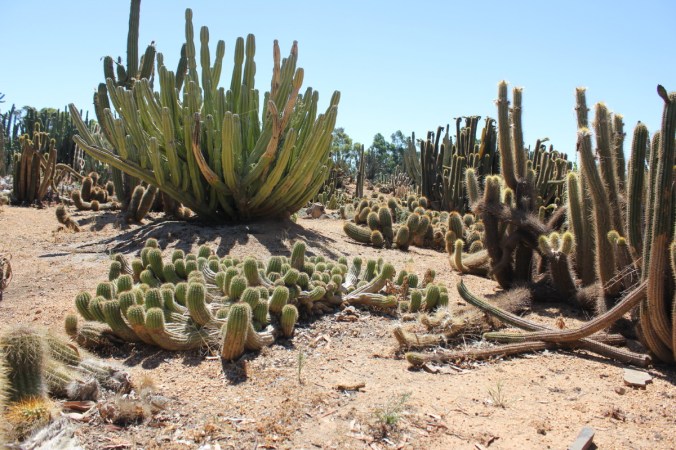
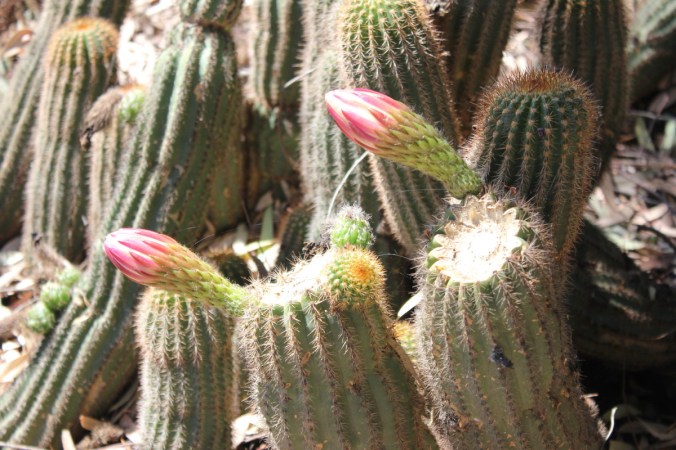
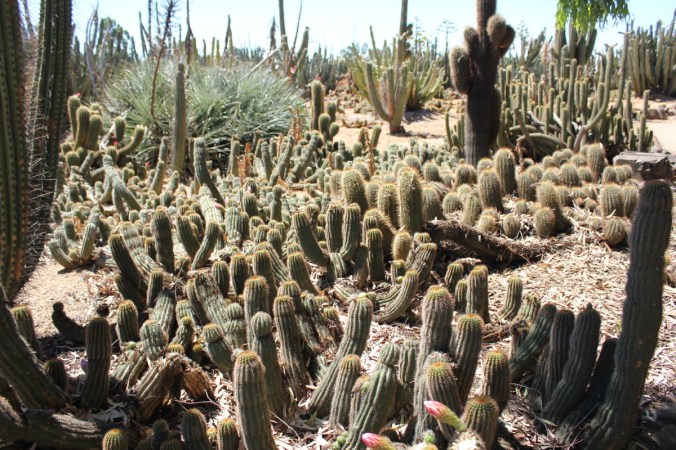






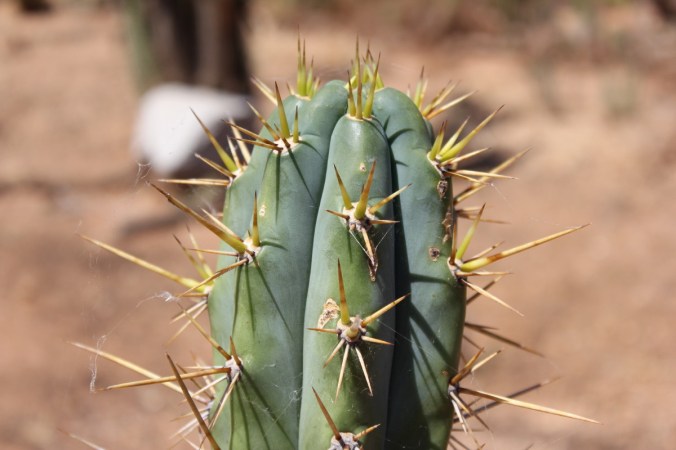




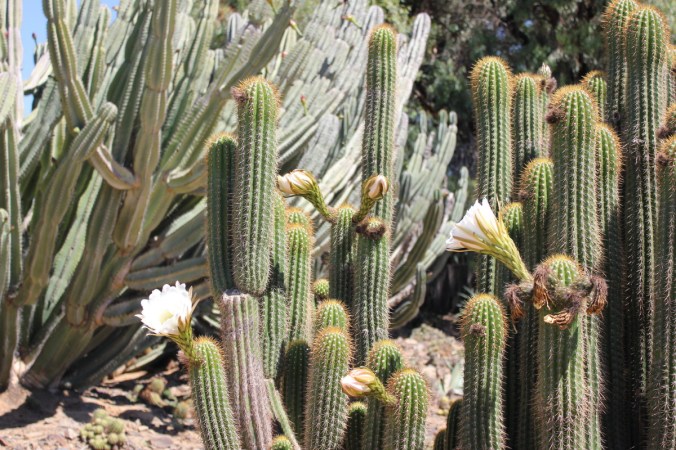


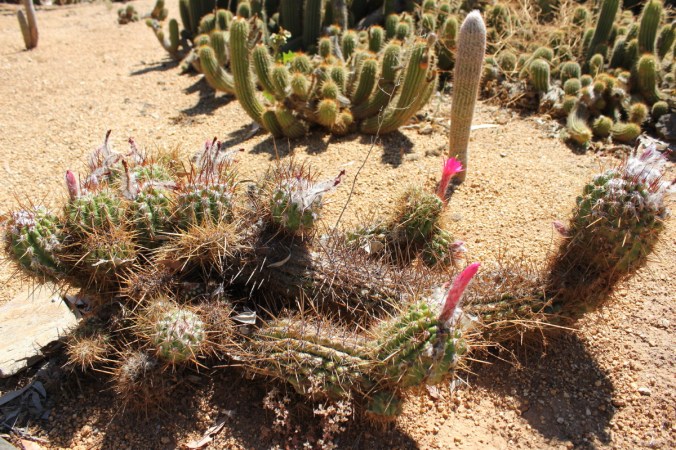
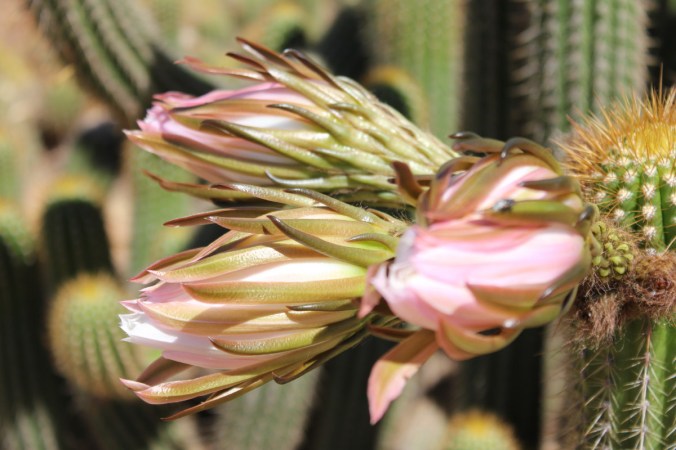




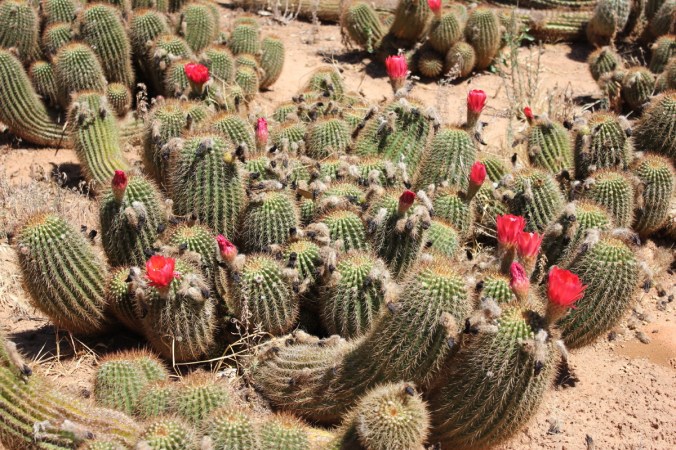

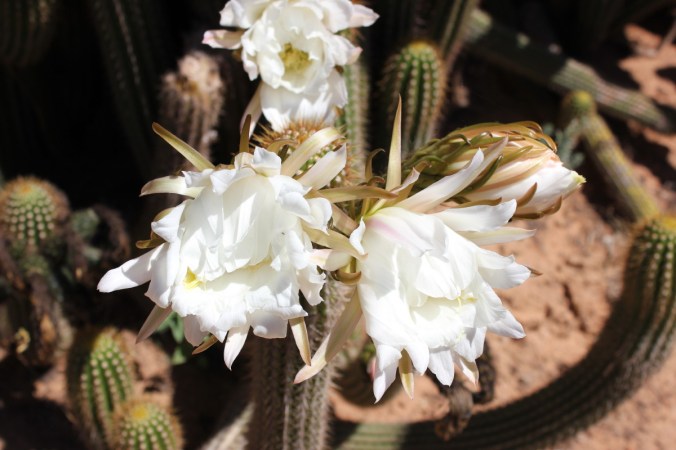
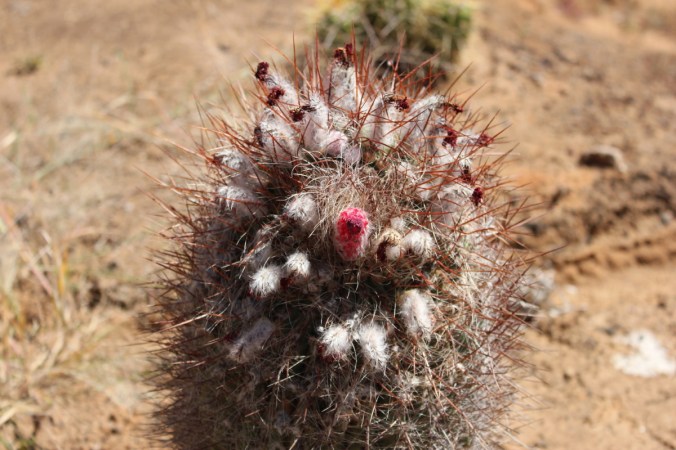

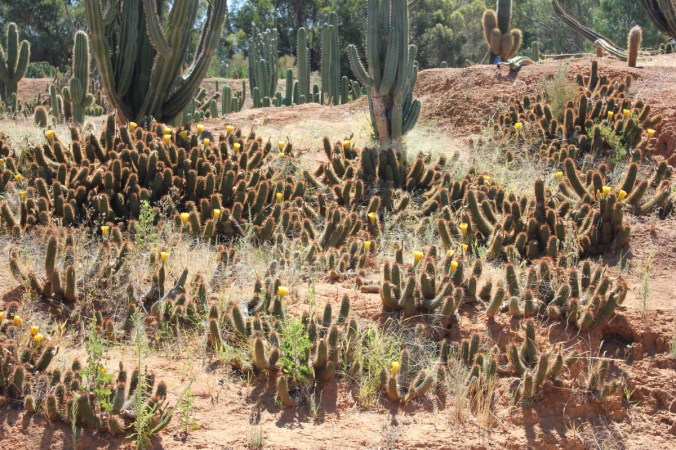

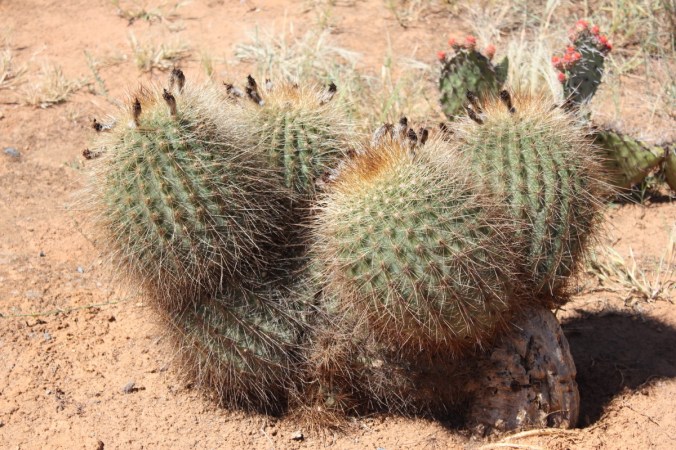


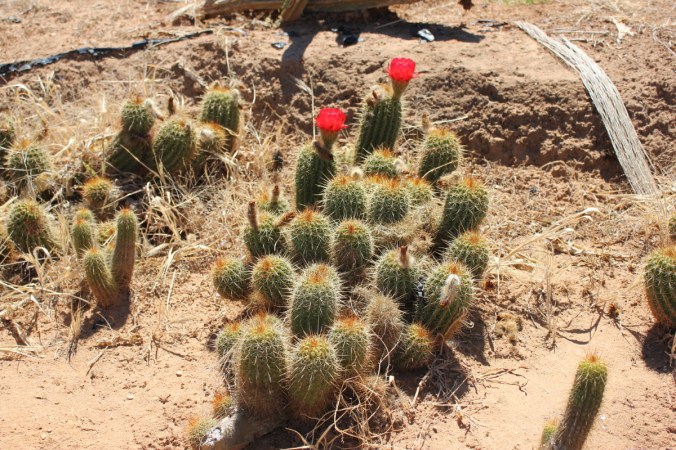


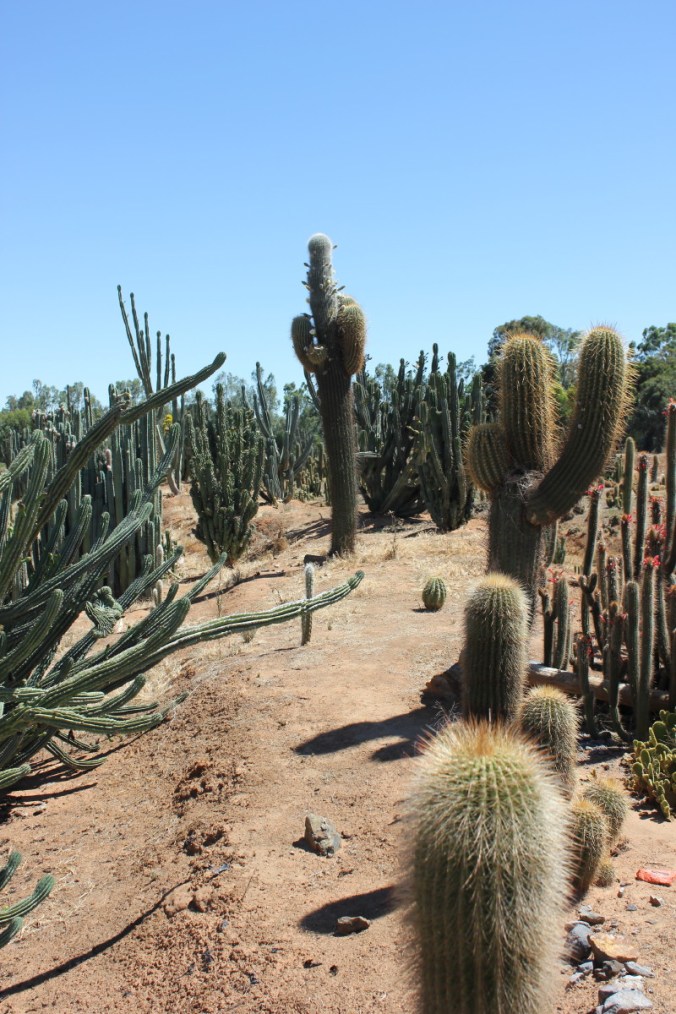





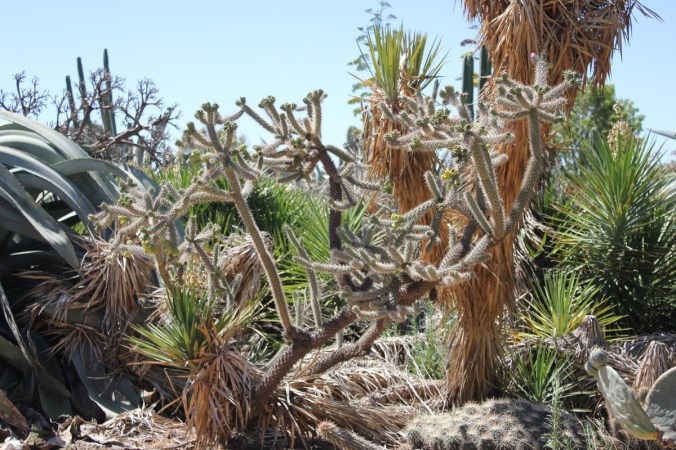
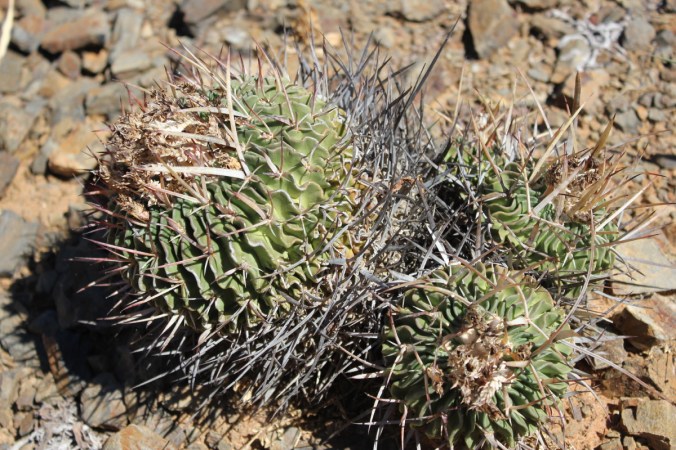


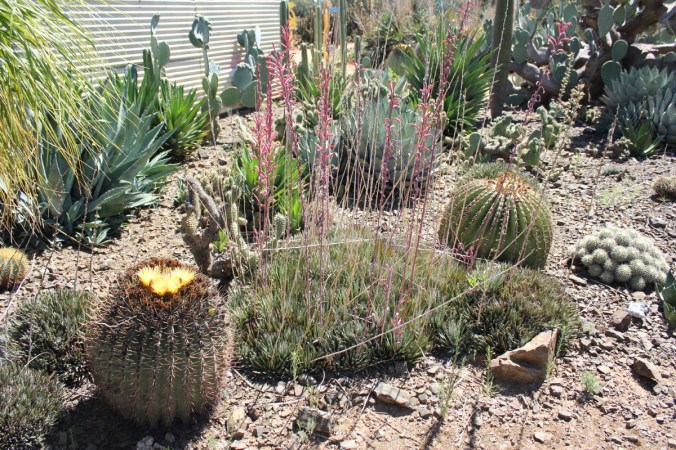


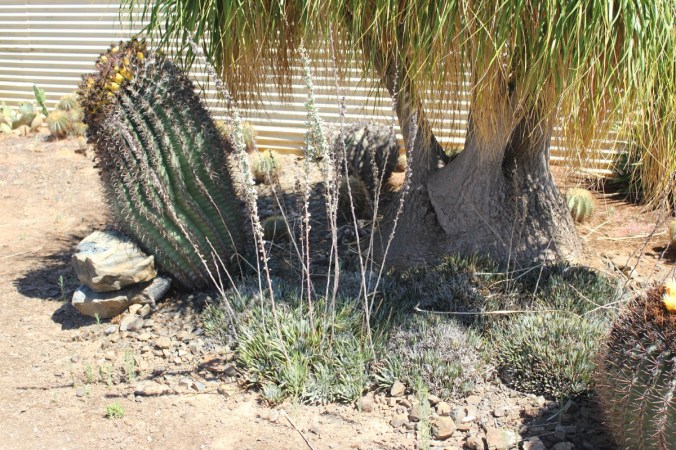
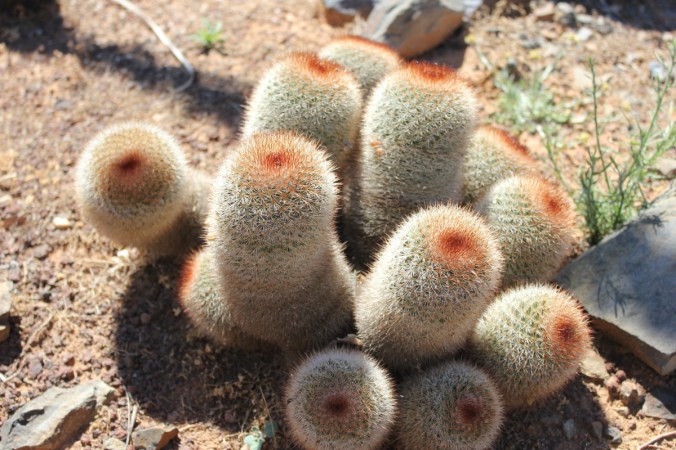

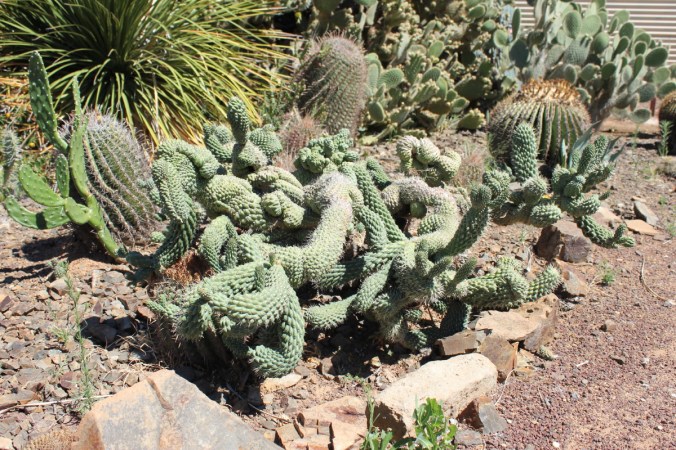

Stay tuned for part 3, the finale!
Cactus and Succulents are plants that are not really in my sphere of interest, I’ve taken this point of view for nigh on twenty years and I’ve been strong in my dislike for them. I can’t explain what has happened because I don’t know what has happen because now I seem to be softening in my stance towards these plants. So much so that in the last six months I have started to look at them and admire them. I now look at things like World of Succulents on Facebook, Danger Garden and Succulents and More(2 excellent blogs that I read). I also discovered recently a place called Cactus Country which is located in Strathmerton, Victoria about an hour and 50 minutes from us. So we decided a visit was required and this is what we saw!




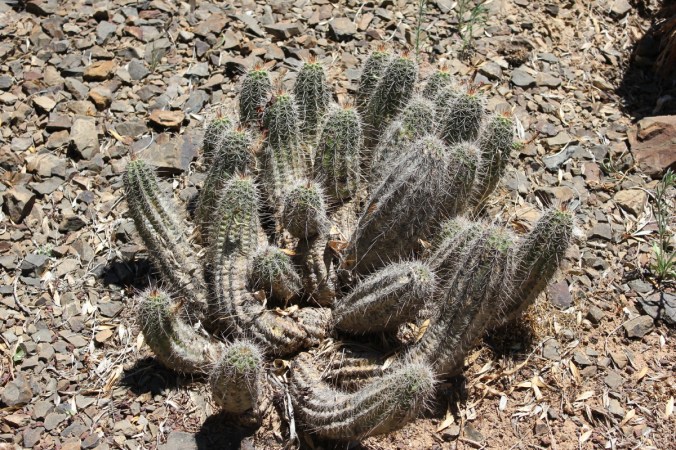

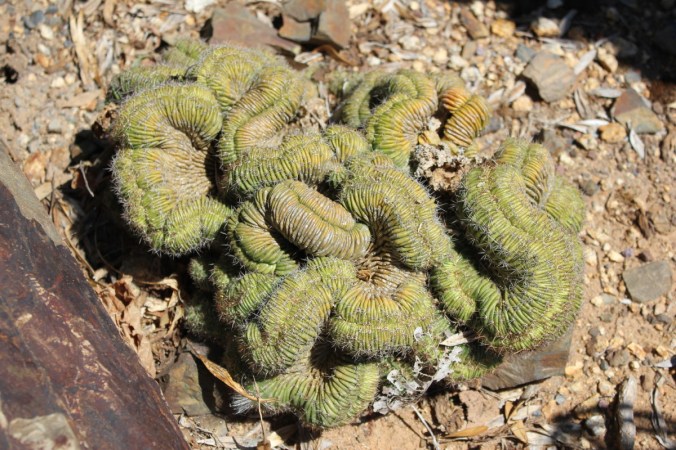












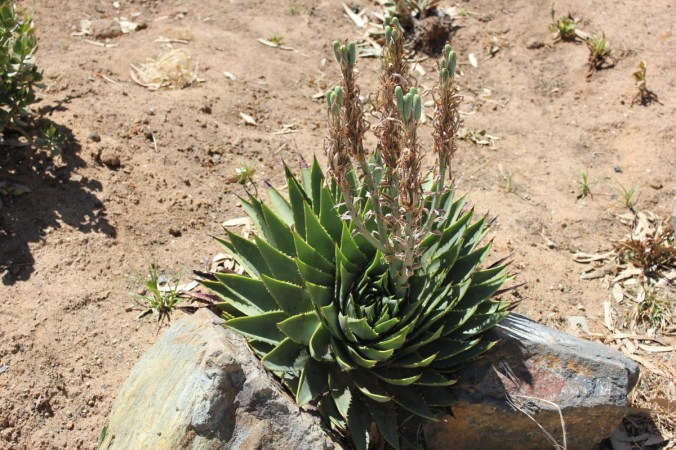
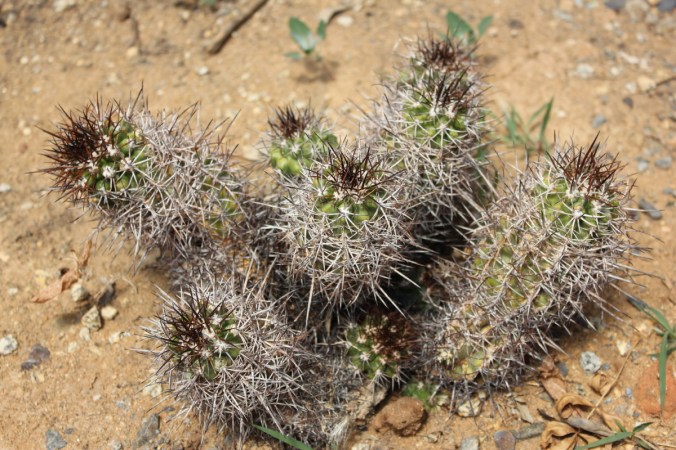




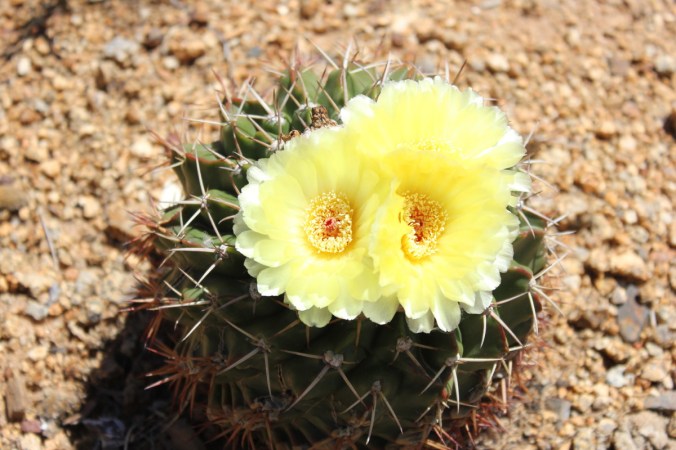




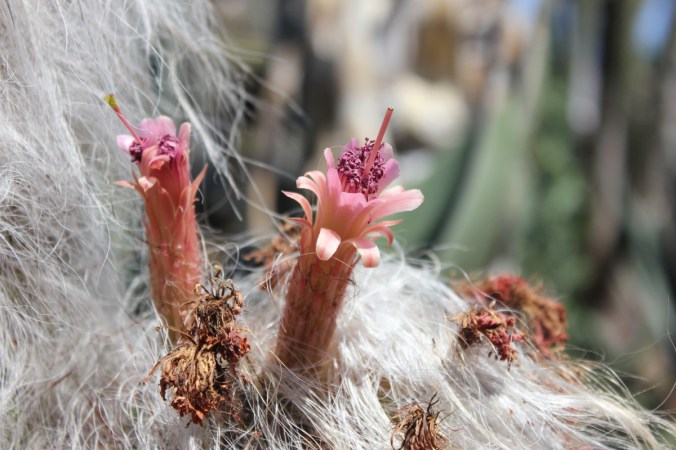

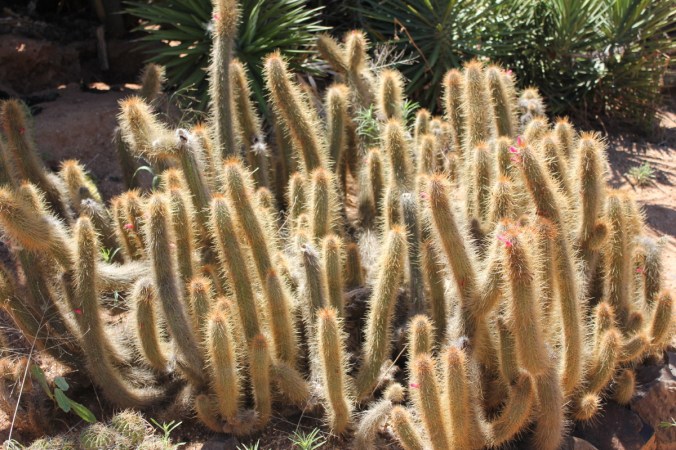


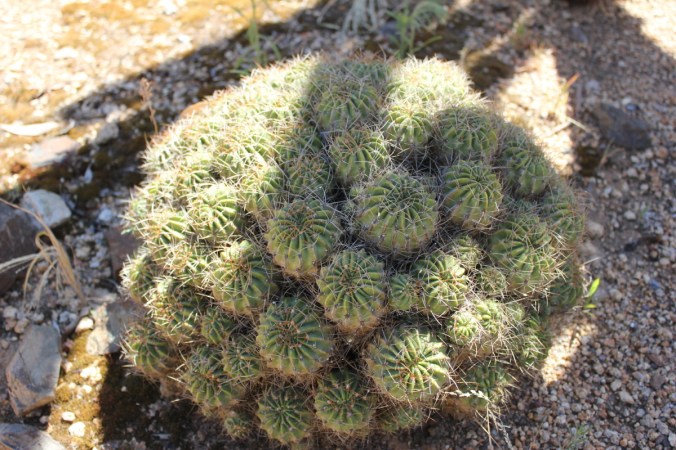
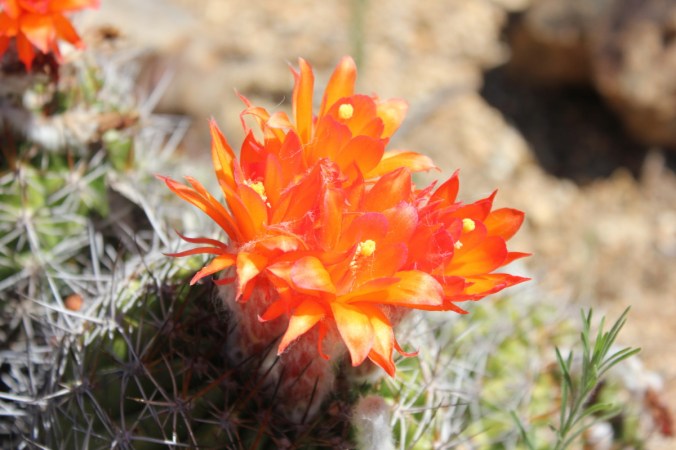



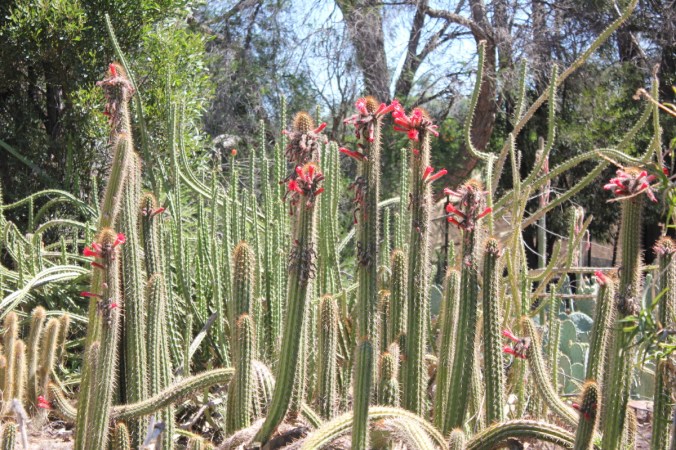
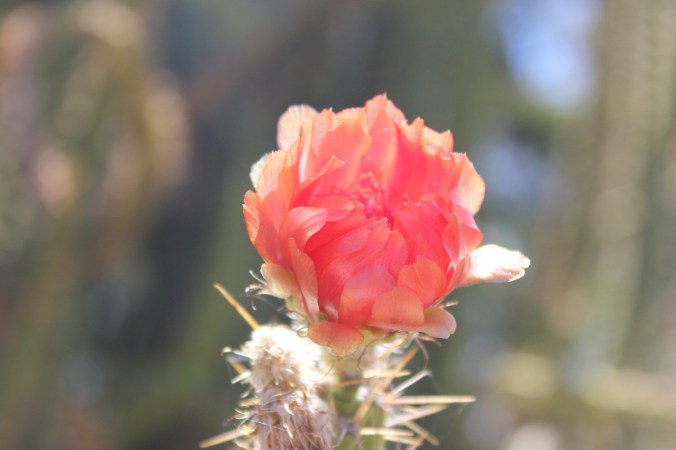

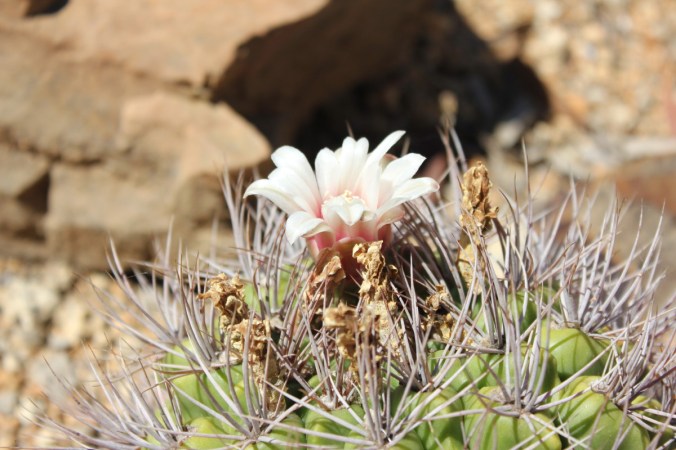
I’m sorry I don’t have names for any of these, I don’t have the foggiest idea! I know some are Ferocactus, Agaves, Opuntias, Cereus, Saguaro, Trichocereus and Yuccas. But that’s about it. For now I just hope you have enjoyed the photos of these amazing plants in all their varied shapes, colours and spines!
Once again it’s that time of year when my Roses are looking fantastic, especially this year with all the rain we have had and no blistering days to scorch the blooms. Normally by now they are starting to fade, but not this year. Hold on to your seats and enjoy, “it’s going to be a bumpy ride”!
We had a list of things to do in Alice Springs which didn’t include a visit to a botanic garden or any garden, a bit odd by my standards. A friend suggested that I should visit the Olive Pink Botanic Garden which I duly did(thanks again Wendy). Google maps provided me with an address and directions. I reached my destination and purchased a guide-book and set off into the Garden. The following is taken from page 2 and 3 of the guide booklet.
“The Australian Arid Regions Native Flora Reserve, now the Olive Pink Botanic Garden, was founded in 1956 after lobbying by Miss Olive Muriel Pink. An unconventional anthropologist, an outspoken advocate for Aboriginal rights, a botanical artist and a women ahead of her time in promoting the cultivation of Australia’s native plants, Miss Pink was the Garden’s honarary Curator from 1956 until her death in 1975, aged 91. Opened to the public in 1985, the Garden has over 600 central Australian plant species, including 33 that are rare or threatened. It provides important habitat for the Black Footed Rock Wallaby and many other native mammals, frogs and reptiles. More than 80 bird species can be observed here.”
Unfortunately the garden had been destroyed by what people are calling a one in a hundred year storm. A hail storm had completely ripped leaves and flowers off everything.
 Fortunately there was still a lot of things to look at and enjoy, particularly new species that I had never heard of before and the setting was idyllic, peaceful and quite in the midst of a major city. I made my way to the top of Annie Myers Hill where there was a fantastic view over Alice springs and the surrounding area.
Fortunately there was still a lot of things to look at and enjoy, particularly new species that I had never heard of before and the setting was idyllic, peaceful and quite in the midst of a major city. I made my way to the top of Annie Myers Hill where there was a fantastic view over Alice springs and the surrounding area.


 You can see it has quite a twiggy appearance which provides good habitat for birds. The above photo makes it look dead but it is missing quite a few leaves from the hail storm although the leaves are like needles. A tree I had never heard of before is pictured below, Atalaya hemiglauca , Whitewood. This tree grows to 7 metres and has creamy flowers in the warmer months of the year. Occurs across central and eastern inland regions. Would look good in a garden setting or Parkland.
You can see it has quite a twiggy appearance which provides good habitat for birds. The above photo makes it look dead but it is missing quite a few leaves from the hail storm although the leaves are like needles. A tree I had never heard of before is pictured below, Atalaya hemiglauca , Whitewood. This tree grows to 7 metres and has creamy flowers in the warmer months of the year. Occurs across central and eastern inland regions. Would look good in a garden setting or Parkland.
 Aboriginal people harvest witchetty grubs from the roots of this tree. Soft timber used to make ornaments as well.
Aboriginal people harvest witchetty grubs from the roots of this tree. Soft timber used to make ornaments as well.
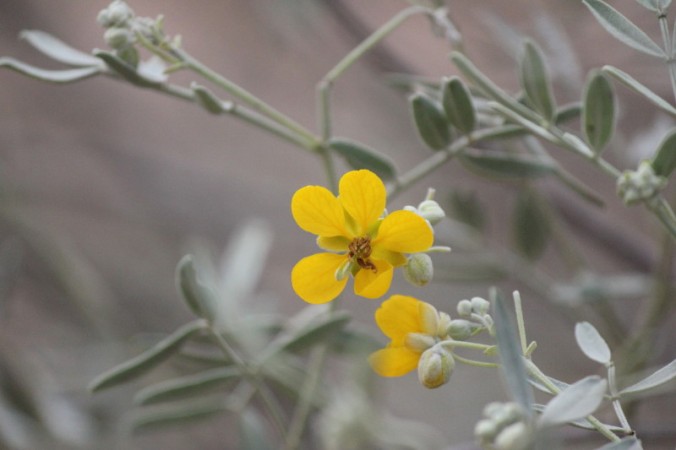 Above is Senna artemisiodes subsp. sturtii which is also known as Dense Cassia. This is a very attractive garden plant particularly while in full flower. Grows to about 2 metres. Saw plenty of Cassia’s Dense or Silver coming into flower. Certainly stand out even on roadsides. Here’s a few more different Wattles.
Above is Senna artemisiodes subsp. sturtii which is also known as Dense Cassia. This is a very attractive garden plant particularly while in full flower. Grows to about 2 metres. Saw plenty of Cassia’s Dense or Silver coming into flower. Certainly stand out even on roadsides. Here’s a few more different Wattles.

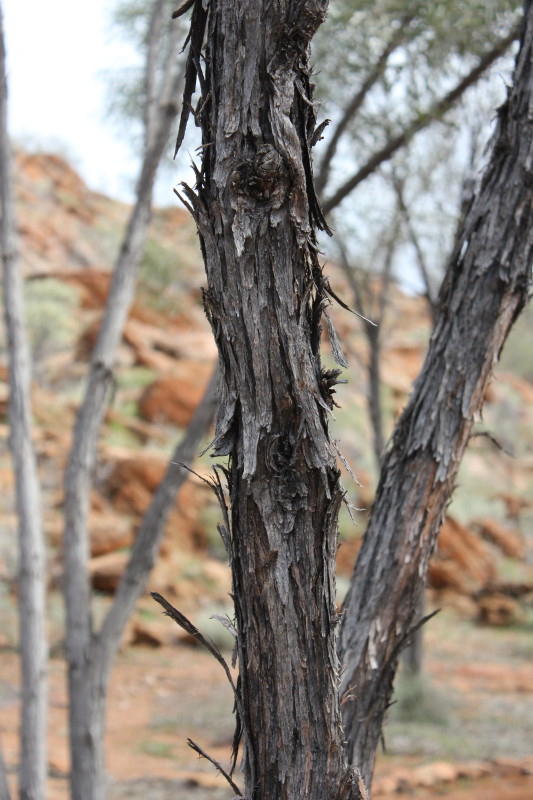 Acacia undoolyana , Undoolya Wattle has limited distribution in the East MacDonnell Ranges, grows to 15 metres and has a spectacular floral display in August. This plants status in the wild is Threatened due to hot summer wildfires and that it doesn’t set seed readily.
Acacia undoolyana , Undoolya Wattle has limited distribution in the East MacDonnell Ranges, grows to 15 metres and has a spectacular floral display in August. This plants status in the wild is Threatened due to hot summer wildfires and that it doesn’t set seed readily.
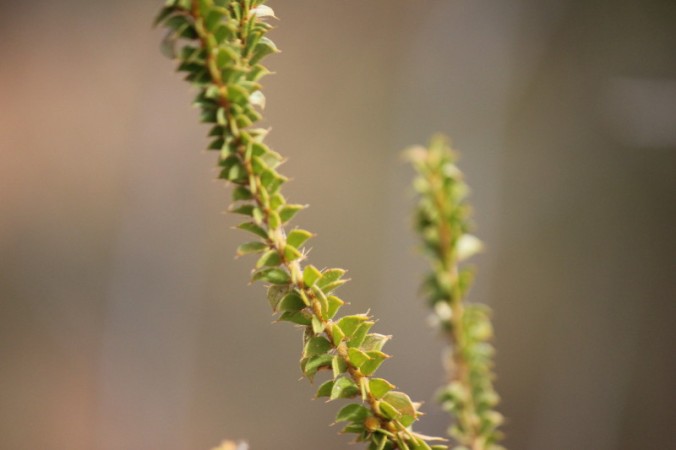 Acacia stipulosa with small interesting leaves. Below is Acacia kempeana , Witchetty Bush which is drought and fire tolerant. Witchetty grubs are harvested from the roots of this small tree. The Arrernte people also use the inner bark from the roots to make string.
Acacia stipulosa with small interesting leaves. Below is Acacia kempeana , Witchetty Bush which is drought and fire tolerant. Witchetty grubs are harvested from the roots of this small tree. The Arrernte people also use the inner bark from the roots to make string.

 Below is a bizarre looking Wattle called Waddy Wood. Acacia peuce is a threatened species known from only three different populations on the edge of the Simpson Desert. Grows to about 17 metres with immature plants being very spiky compared to mature specimens which have pendulous branches. Used traditionally for clubs and by early European settlers for fences.
Below is a bizarre looking Wattle called Waddy Wood. Acacia peuce is a threatened species known from only three different populations on the edge of the Simpson Desert. Grows to about 17 metres with immature plants being very spiky compared to mature specimens which have pendulous branches. Used traditionally for clubs and by early European settlers for fences.

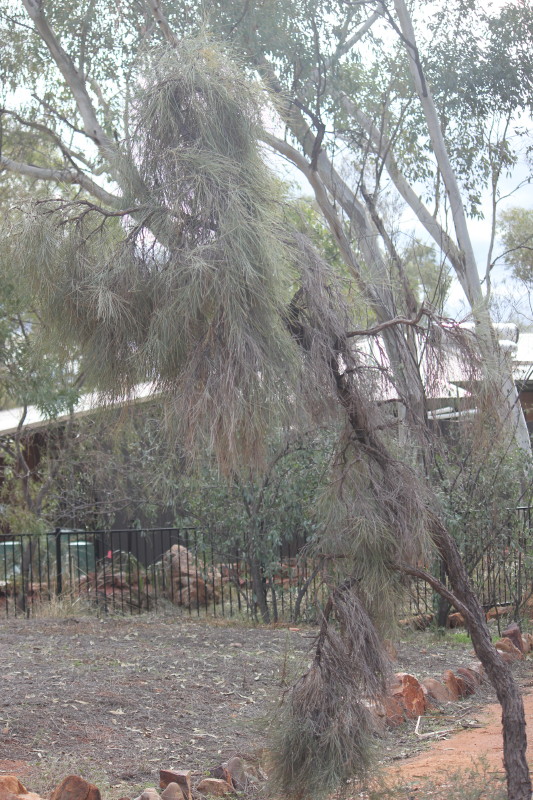 Acacia desmondii , Des Nelson Wattle is found in the Rodinga Range south of Alice Springs. Grows to 5 metres on sandstone ridge habitat.
Acacia desmondii , Des Nelson Wattle is found in the Rodinga Range south of Alice Springs. Grows to 5 metres on sandstone ridge habitat.
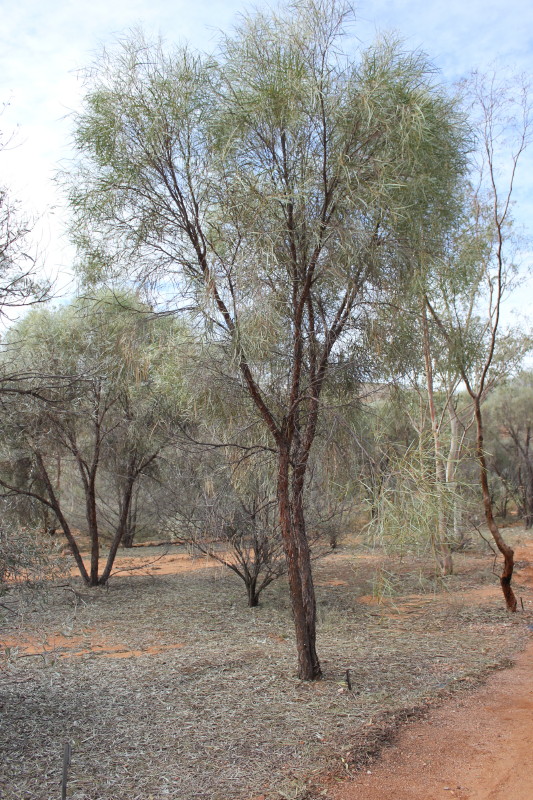
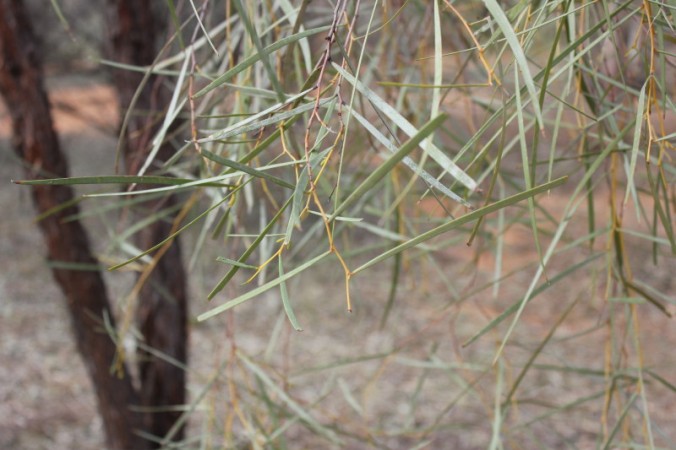
Below is Acacia aneura , which is commonly called Mulga. Mulga occurs in red earths in groves and is one of the most widespread Wattles in inland Australia.

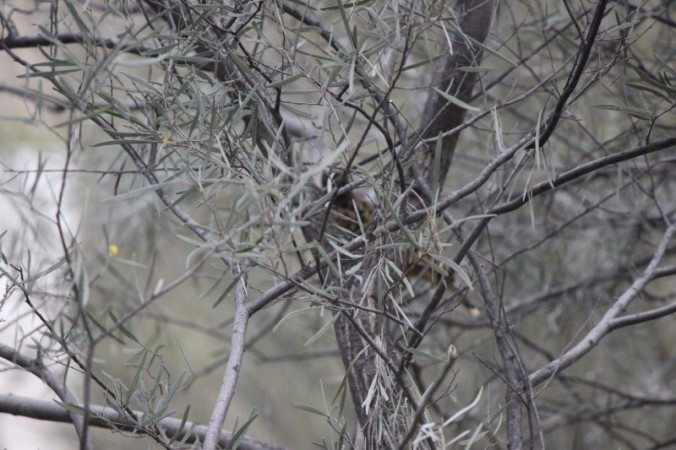 Seed from this plant is an important bush food throughout the region, it also produces Mulga Apples, a gall that forms around insect larvae which is consumed as well. The timber is widely used as firewood and traditionally for making shields, digging sticks and woomeras. There also 2 types of mistletoe that co habit this tree. Amyema maidenii and Amyena spathulata(you will see this in a later post).
Seed from this plant is an important bush food throughout the region, it also produces Mulga Apples, a gall that forms around insect larvae which is consumed as well. The timber is widely used as firewood and traditionally for making shields, digging sticks and woomeras. There also 2 types of mistletoe that co habit this tree. Amyema maidenii and Amyena spathulata(you will see this in a later post).

Below we see the native fig, Ficus brachycoda. I saw this in quite a few different locations in the Macdonnell Ranges and Kata Tjuta National Park(Uluru and The Olga’s).
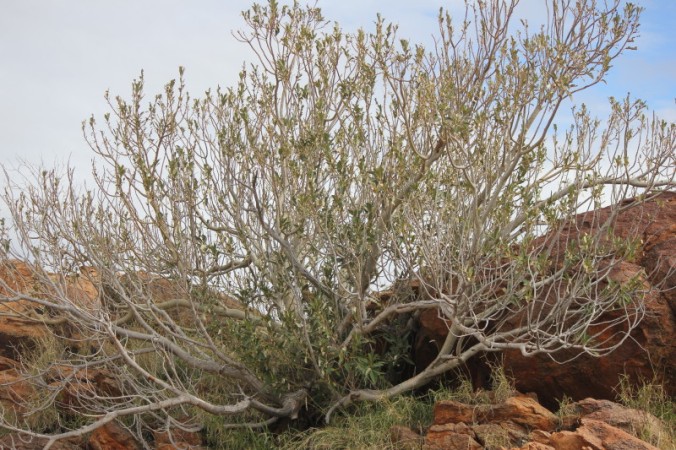
 Now for some Mallee’s. Mallee’s are multi stemmed tree’s from the genus’s Eucalyptus and Corymbia. There’s approximately 1000 different species of Eucalypts and Bloodwoods, don’t panic I’ll only show a couple!!
Now for some Mallee’s. Mallee’s are multi stemmed tree’s from the genus’s Eucalyptus and Corymbia. There’s approximately 1000 different species of Eucalypts and Bloodwoods, don’t panic I’ll only show a couple!!
 Above is Eucalyptus sessilis the Finke River Mallee which occurs in the ranges south and west of Alice Springs. This Mallee has smooth bark and large leathery leaves on a small multi trunked tree. Flowers are creamy yellow. This Mallee has nice orangey/brown coloured trunks and branches, noticeable when the bark is peeling. Below we have Eucalyptus oximitra , the Sharp Capped Mallee.
Above is Eucalyptus sessilis the Finke River Mallee which occurs in the ranges south and west of Alice Springs. This Mallee has smooth bark and large leathery leaves on a small multi trunked tree. Flowers are creamy yellow. This Mallee has nice orangey/brown coloured trunks and branches, noticeable when the bark is peeling. Below we have Eucalyptus oximitra , the Sharp Capped Mallee.
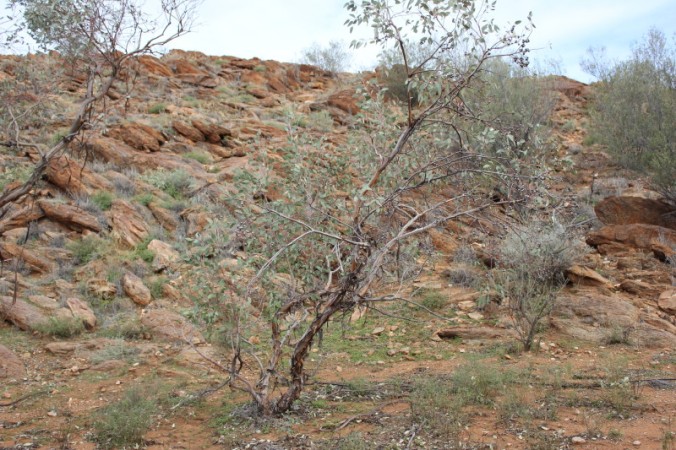 This Mallee grows to 6 metres with leathery leaves and large yellow flowers during the summer months. Can be found on sandy plains or rocky hills in arid parts of Australia, mostly S.A, N.T, and W.A. Below you can see its capsules.
This Mallee grows to 6 metres with leathery leaves and large yellow flowers during the summer months. Can be found on sandy plains or rocky hills in arid parts of Australia, mostly S.A, N.T, and W.A. Below you can see its capsules.
 Last but not least of the Mallee’s is Eucalyptus gamophylla , the Blue Mallee which can be found in many arid parts of Australia. Growing to about 8 metres with blueish coloured leaves, juvenile leaves are round and creamy white flowers during summer. Found on rocky hills or red sand country. Seeds can be eaten and water can be found in the roots if desperate!
Last but not least of the Mallee’s is Eucalyptus gamophylla , the Blue Mallee which can be found in many arid parts of Australia. Growing to about 8 metres with blueish coloured leaves, juvenile leaves are round and creamy white flowers during summer. Found on rocky hills or red sand country. Seeds can be eaten and water can be found in the roots if desperate!
 What about Erythrina vespertilio another tree I had no idea about. The Bean Tree or Bats wing Coral tree has extremely light wood which was used for making shields and bowls.
What about Erythrina vespertilio another tree I had no idea about. The Bean Tree or Bats wing Coral tree has extremely light wood which was used for making shields and bowls.
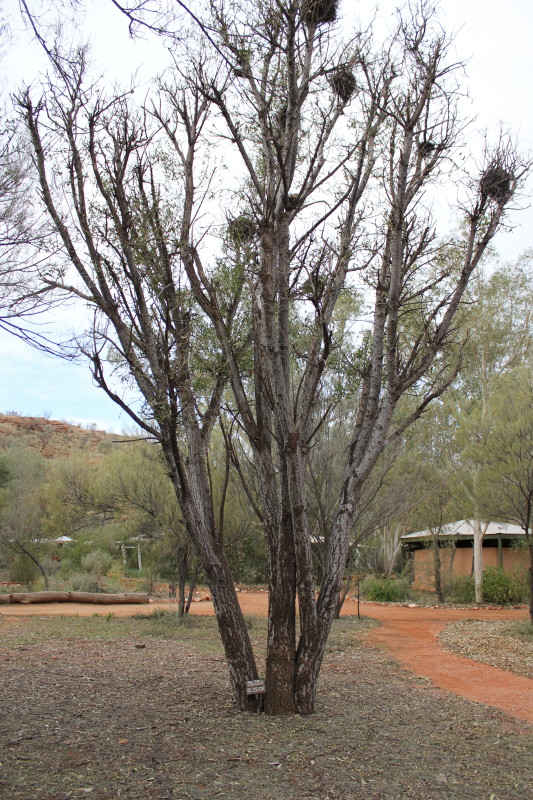 Looks like there’s a few nests in this one. Grows up to 15 metres with leaves that are shaped like a bat. it also has quite stunning red/orange flowers. It also loses its leaves when it flowers in spring and summer. All in all by visiting the Olive Pink Botanic Garden in Alice Springs I have learnt a great deal about new(to me) varieties of Wattles and Eucalypts and even new species of plants which is very exciting. Astounding to learn how the Indigenous people use these plants as well. Next time you’re in Alice Springs, do make sure you drop in and have a look, its well worth it. To finish up here are some photos of a native conifer, Callitris glaucophylla , White Cypress Pine grows to somewhere between 7 -20 metres with blue-green cypress like foliage usually with a single trunk. White Cypress Pine is known for being extremely Termite resistant. Quite a nice conifer that is widespread across the country.
Looks like there’s a few nests in this one. Grows up to 15 metres with leaves that are shaped like a bat. it also has quite stunning red/orange flowers. It also loses its leaves when it flowers in spring and summer. All in all by visiting the Olive Pink Botanic Garden in Alice Springs I have learnt a great deal about new(to me) varieties of Wattles and Eucalypts and even new species of plants which is very exciting. Astounding to learn how the Indigenous people use these plants as well. Next time you’re in Alice Springs, do make sure you drop in and have a look, its well worth it. To finish up here are some photos of a native conifer, Callitris glaucophylla , White Cypress Pine grows to somewhere between 7 -20 metres with blue-green cypress like foliage usually with a single trunk. White Cypress Pine is known for being extremely Termite resistant. Quite a nice conifer that is widespread across the country.
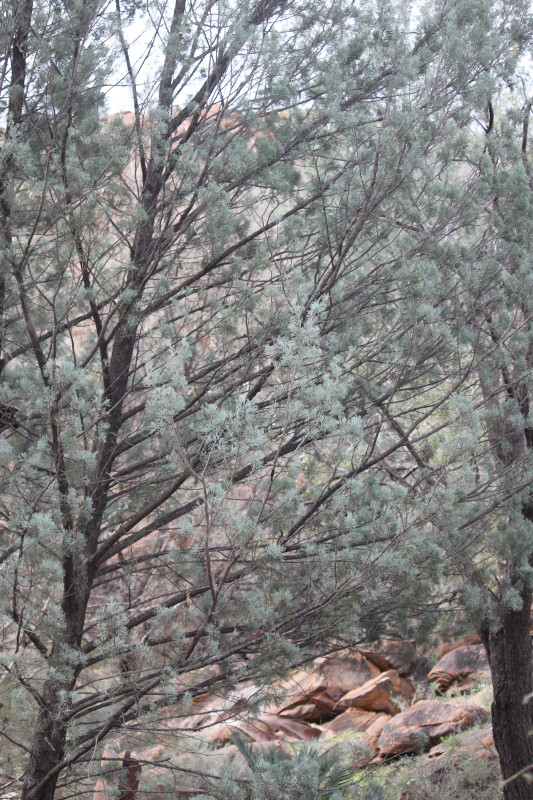
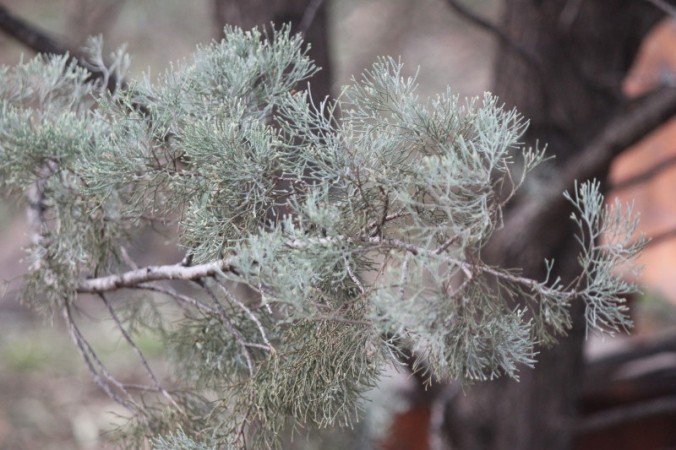 Stay tuned for part 3, coming soon!!
Stay tuned for part 3, coming soon!!